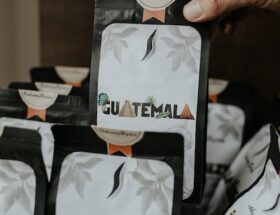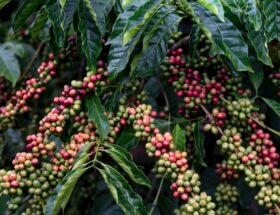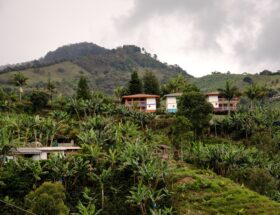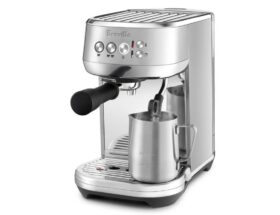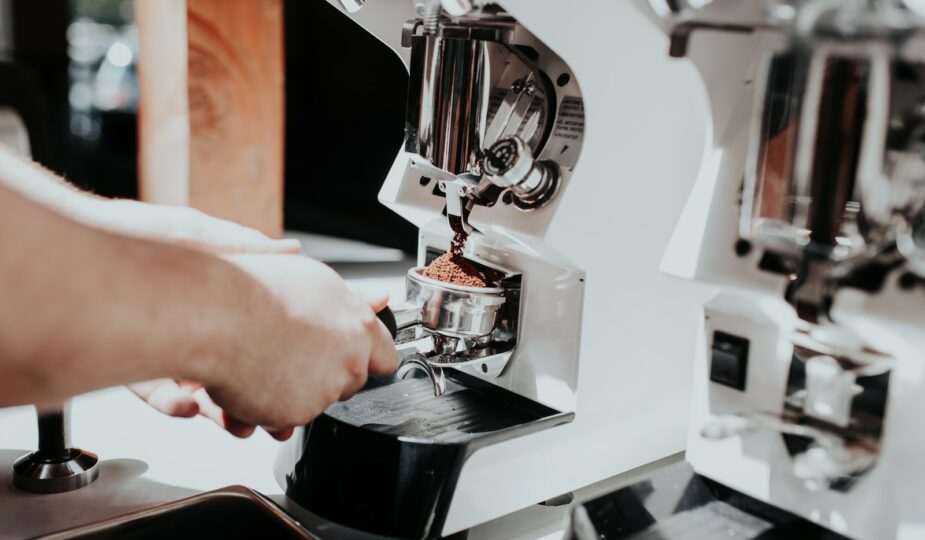
Exploring Single Origin Coffees: A Journey through Different Coffee Region
Welcome to a delightful journey through the rich tapestry of Single Origin Coffees – a world where every sip tells a unique story. If you’re a coffee enthusiast, you’re in for a treat! Single Origin Coffees are not just beverages; they’re a testament to the diverse flavors the world has to offer.
So, what exactly are Single Origin Coffees? These are coffee beans cultivated in a single geographical region, capturing the essence of their birthplace. From the misty highlands of Latin America to the lush coffee plantations of Africa, and the exotic terrains of Asia, each region imparts distinct characteristics to its beans.
Table of Contents
The Significance of Coffee Regions
The region where coffee grows plays a pivotal role in defining the beans’ flavor. The altitude, climate, soil composition, and cultivation methods all influence the final product. It’s the equivalent of terroir in the wine world – the taste of the land.
This blog will be your guide to exploring the world of Single Origin Coffees. We’ll traverse the coffee regions, unravel flavor profiles, discuss brewing methods, and share tips on where to source these exceptional beans. Let’s embark on a journey to savor coffee’s diversity and discover your new favorite brew.
The World of Single Origin Coffees
Single Origin Coffees are like the world’s finest storytellers, each narrating a unique tale through its flavors. To appreciate them fully, it’s essential to understand the regions from which they originate.
Coffee Regions – A Global Mosaic
Coffee is not just a drink; it’s a cultural symbol, and its essence varies from region to region. Here are some of the most renowned coffee regions:
Latin America
Latin American coffees are celebrated for their bright acidity and clean, crisp flavors. Countries like Colombia, Brazil, and Guatemala are coffee giants. Colombian coffee, in particular, is known for its mild, well-balanced taste with hints of nuttiness. Brazilian coffee, on the other hand, boasts a mild, nutty profile with low acidity.
African Coffee Elegance
Africa is where the coffee journey began, and it continues to enchant with its distinctive flavors. Ethiopian coffee is famous for its floral and fruity notes, often accompanied by a wine-like Kenyan coffee, known for its bright acidity, is cherished for its berry and citrus undertones.
Asian Coffee Adventures
Asian coffee is an adventure for the palate. Sumatra, an Indonesian island, produces coffee with earthy and herbal notes. The unique processing methods here include wet hulling, which contributes to the bean’s distinct flavor. In India, coffee from regions like Coorg and Chikmagalur offers a taste of spice, nuts, and mild acidity.
The Magic of Central America
Central America, including countries like Costa Rica and Honduras, delivers coffees with bright acidity and a mix of fruit and chocolate flavors. These regions often practice sustainable and eco-friendly cultivation methods, adding a touch of environmental consciousness to your cup.
The Mystery of Pacific Coffees
The Pacific region, featuring Hawaii and Papua New Guinea, brings forth exotic coffee experiences. Hawaiian Kona coffee, grown on the slopes of Mauna Loa, is celebrated for its smooth and buttery profile with a hint of nuttiness. Meanwhile, Papua New Guinea coffee offers a unique combination of smoky, herbal, and earthy notes.
What Makes These Coffees Stand Out?
The secret to these coffee profiles lies in the combination of factors like altitude, climate, soil composition, and cultivation techniques. For instance, high-altitude regions tend to produce beans with a higher acidity and complex flavor profiles, while low-altitude areas often result in beans with a heavier body and muted acidity.
| Coffee Region | Altitude (meters) | Climate | Flavor Profile | Popular Varieties |
|---|---|---|---|---|
| Latin America | 900 – 1,600 | Temperate to tropical, consistent rainfall | Bright, Citrusy, Nutty | Typica, Bourbon, Caturra |
| Africa | 1,100 – 2,100 | Varied, from subtropical to equatorial | Fruity, Floral, Spicy | Yirgacheffe, Sidamo, Harrar |
| Asia | 800 – 1,400 | Tropical, monsoon-influenced | Earthy, Full-Bodied, Herbal | Sumatra, Java, Timor |
| Central America | 1,200 – 1,800 | Varied, tropical lowlands to temperate highlands | Balanced, Nutty, Chocolatey | Catuai, Pacamara, SL28 |
Understanding these regional distinctions is your passport to a sensory world tour. Whether you’re drawn to the bright and zesty Latin American coffees or the wild and fruity notes of African beans, each region offers a unique adventure. In the following sections, we’ll delve deeper into the flavors and brewing techniques specific to these regions.
Unveiling Flavor Profiles
When you explore Single Origin Coffees, you’re embarking on a journey through a diverse range of flavors. Each coffee region has its distinct characteristics, making it a captivating experience for your taste buds.
Latin American Delights
In Latin America, coffee is a symphony of bright acidity and clean, crisp flavors. Colombian coffee is celebrated for its mild, well-balanced taste with hints of nuttiness. If you prefer a milder profile, Brazilian coffee boasts a mild, nutty flavor with low acidity. And in Guatemala, you’ll encounter beans with a delightful combination of acidity and a chocolatey finish.
The Essence of Africa
African coffees are a journey of exploration, with Ethiopian coffee at the forefront. It entices with floral and fruity notes, often accompanied by a wine-like acidity. On the other hand, Kenyan coffee stands out with its bright acidity and a medley of berry and citrus undertones. These unique flavors are a testament to Africa’s rich coffee heritage.
Asian Intrigue
Asia delivers a wide range of coffee experiences. Sumatran coffee, known for its earthy and herbal notes, is the result of unique wet hulling methods. Indian coffee, from regions like Coorg and Chikmagalur, offers a delightful blend of spices, nuts, and mild acidity. The diversity of Asian coffee reflects the region’s rich cultural tapestry.
Central American Marvels
Central America, including Costa Rica and Honduras, presents coffees with bright acidity and a mix of fruit and chocolate flavors. What makes these coffees special is the sustainable and eco-friendly cultivation methods employed. They not only taste great but also come with a touch of environmental responsibility.
Pacific Wonders
The Pacific region, featuring Hawaiian Kona coffee and Papua New Guinea coffee, offers truly exotic flavors. Hawaiian Kona coffee is known for its smooth and buttery profile with a hint of nuttiness, thanks to the unique Hawaiian terroir. Meanwhile, Papua New Guinea coffee’s smoky, herbal, and earthy notes provide an exciting alternative for adventurous coffee enthusiasts.
Brew and Sip Your Way Around the World
Understanding the flavor profiles of Single Origin Coffees from different regions allows you to embark on a unique sensory journey. Your choice of coffee beans can transport you to the lush hills of Colombia, the highlands of Ethiopia, or the volcanic slopes of Hawaii. In the following sections, we’ll delve into the brewing methods that best highlight the flavors of each region, ensuring you savor every note and nuance.
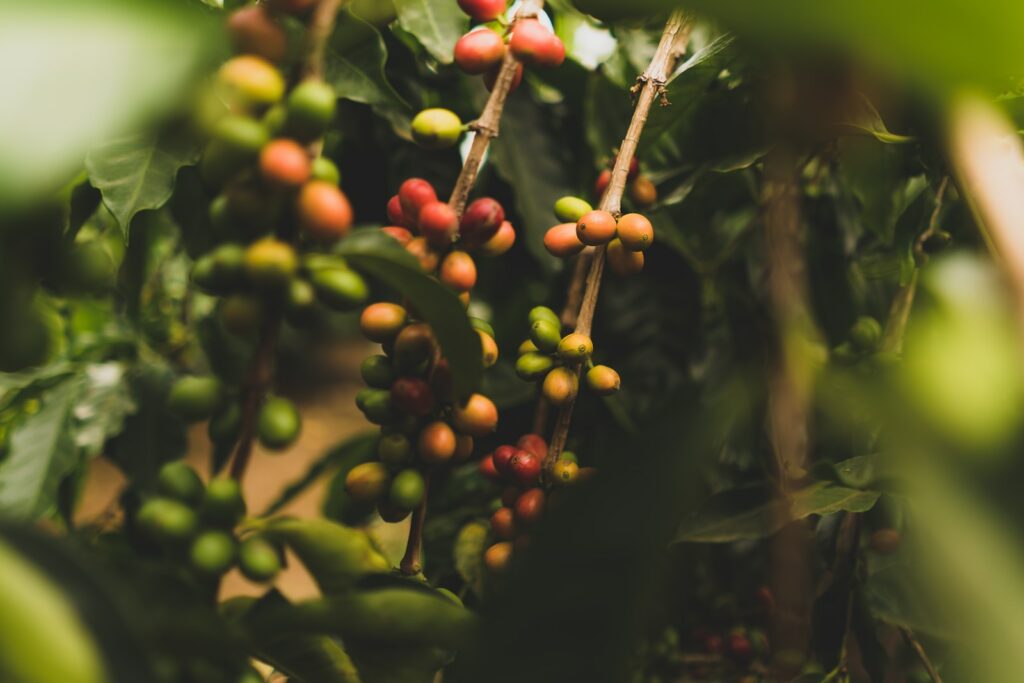
Brewing Methods to Elevate Regional Flavors
Once you’ve delved into the intricate world of Single Origin Coffees, it’s time to embark on a journey to uncover the perfect brewing methods. Your choice of brewing technique can significantly influence the way these unique regional flavors manifest in your cup, and that’s precisely what we’re here to explore.
Pour-Over Precision
Pour-over brewing stands out as a method that accentuates the nuanced flavors of Single Origin Coffees. This meticulous approach allows for a gentle, even extraction, ensuring that the distinctive characteristics of each region are fully expressed. When brewing Single Origin Coffees, opt for a medium grind size and maintain the water temperature at approximately 200°F (93.3°C). This precision particularly amplifies the floral and fruity notes often found in African coffees.
French Press Fullness
For those who favor a robust, full-bodied coffee experience, the French press, or press pot, is the ideal choice. This method extracts coffee oils and flavors effectively. Utilize a coarser grind and steep the grounds for around 4 minutes with water just below boiling. By employing this method, you can perfectly complement the earthy and herbal notes characteristic of Asian coffees.
Espresso Elegance
Espresso, a classic and revered brewing method, delivers an intense and concentrated coffee experience. Its quick extraction process, coupled with the high pressure, brings forth a bold and rich profile. When it comes to Single Origin Coffees, the espresso method shines, particularly when paired with Central American beans. It enhances their bright acidity and elevates their chocolatey undertones, allowing you to savor the essence of the region in every sip.
Aeropress Adventure
The Aeropress, known for its versatility and ability to provide control over variables such as brew time and grind size, is perfect for those eager to experiment with various coffee profiles. This method is highly compatible with Latin American and Pacific coffees. It grants you the flexibility to adjust parameters, making it an excellent choice for showcasing specific flavor notes that pique your interest.
Cold Brew Chill
If you’re seeking a refreshing and less acidic coffee experience, cold brewing is the answer. This method highlights the milder nuances of Single Origin Coffees, making them exceptionally suitable for hot summer days. Cold brew beautifully complements Brazilian coffee, emphasizing its nutty and low-acidity character. It’s a delightful way to explore the diverse world of coffee from the comfort of your favorite shaded spot.
| Region | Recommended Brewing Methods | Flavor Profile |
|---|---|---|
| Ethiopia | V60 pour-over, Aeropress, Chemex | Fruity, floral, and bright |
| Colombia | French press, Espresso, Drip coffee | Medium-bodied, nutty, and balanced |
| Kenya | Chemex, Aeropress, Siphon | Bright acidity, fruity, and complex |
| Guatemala | French press, Espresso, Drip coffee | Full-bodied, chocolatey, and nutty |
| Costa Rica | V60 pour-over, Aeropress, Chemex | Bright, citrusy, and clean |
Mastering the Art of Brewing
Each brewing method mentioned here has its unique advantages and brings out the best in Single Origin Coffees from different regions. The key is to experiment, adjust, and relish the art of discovering how various brewing techniques can elevate your Single Origin Coffee experience to new heights. So, set forth on this voyage and let your taste buds be your guide as you explore the regional treasures within your coffee cup.
Brewing Tips for Single Origin Coffees
Now that you’ve explored the fascinating world of Single Origin Coffees from diverse coffee regions, it’s time to learn the art of brewing them to perfection. Brewing is a crucial aspect of your coffee experience, as it can significantly influence the flavors and aromas you extract from your beans. In this section, we’ll delve into the details and provide you with expert tips to help you savor your Single Origin Coffees like a true coffee connoisseur.
Coffee-to-Water Ratio: Finding the Perfect Balance
Getting the coffee-to-water ratio just right is essential. It varies depending on the roast level and grind size of your Single Origin Coffee. For a good starting point, aim for a ratio of 1:15 (1 part coffee to 15 parts water) and then adjust to your taste. This experimentation allows you to discover the ideal balance that enhances the coffee’s unique flavors.
Water Temperature: The Goldilocks Zone
Water temperature plays a pivotal role in coffee extraction. For most Single Origin Coffees, aim for a water temperature between 195-205°F (90-96°C). This temperature range ensures that the coffee grounds are fully extracted without causing bitterness or over-extraction. Use a thermometer to hit this sweet spot consistently.
Brewing Methods: Unleash the Potential
The choice of brewing method is your gateway to accentuating specific flavor notes in your Single Origin Coffee. Whether it’s the precision of pour-over, the richness of French press, the convenience of an Aeropress, or the intensity of espresso, experiment with various methods to discover the one that harmonizes with your coffee’s unique characteristics.
Grind Size: Fine-Tuning Your Extraction
Grind size directly impacts the rate of extraction. Coarser grinds are perfect for longer extraction methods, like French press, while finer grinds suit quicker extractions, such as espresso. Match your grind size with your chosen brewing method for an optimal brewing experience. Using a burr grinder ensures consistency.
The Freshness Factor: A Flavor Game Changer
Single Origin Coffees shine brightest when they’re freshly roasted and ground. Flavor and aroma begin to deteriorate shortly after roasting. To experience the full spectrum of flavors and aromas, aim to consume your coffee within a few weeks of the roast date. Store your beans in an airtight container, away from light, heat, and moisture, to preserve their freshness.
Savoring the Experience: Tasting Notes as Your Guide
When brewing Single Origin Coffees, pay close attention to the tasting notes provided by the roaster. These notes are invaluable guides to help you identify and appreciate the unique flavors and aromas present in your coffee. Challenge your palate to pick out these nuanced notes as you savor your expertly brewed cup.
By mastering the art of brewing Single Origin Coffees, you unlock the full potential of each coffee’s distinct flavor profile. Whether you favor a lively pour-over from Ethiopia or a robust espresso from Guatemala, the right brewing techniques elevate your coffee journey to a whole new level of sensory delight.
Where to Buy Single Origin Coffees
Now that you’ve gained a deep understanding of Single Origin Coffees and their unique characteristics, you might be wondering where you can purchase these exquisite beans. Finding the right source is crucial to ensure the authenticity and quality of your coffee.
Here are some options to consider:
Local Specialty Coffee Shops
Your local specialty coffee shops or roasters often carry a selection of Single Origin Coffees. Visit these establishments to explore a curated collection of beans from various regions. The knowledgeable staff can provide recommendations and even offer tastings to help you discover your preferences.
Here are some options to consider:
- The Best Coffee Roasters in New Orleans
- The Best Seattle Specialty Coffee Roasters in 2023
- The Best Coffee Roasters in Chicago
- The Best Coffee Roasters in Manhattan
- The Ultimate Guide to Coffee Roasters in Boston
- The Best Coffee Roasters in Melbourne
- The Best Coffee Roasters in Sydney
Online Retailers
Online retailers and e-commerce platforms are excellent resources for purchasing Single Origin Coffees. Many reputable companies specialize in sourcing and delivering these unique beans to your doorstep. When shopping online, be sure to read product descriptions, customer reviews, and check for certifications like Fair Trade or Organic, depending on your preferences.
Direct from Farms
If you’re looking for the most authentic experience and want to support coffee producers directly, consider purchasing Single Origin Coffees directly from coffee farms. Some coffee farms offer online sales or cooperatives that connect you with small-scale producers. Buying directly from the source can be a rewarding way to enjoy your coffee while supporting local communities.
Coffee Subscription Services
For a regular supply of Single Origin Coffees delivered to your doorstep, consider subscribing to a coffee subscription service. These services often curate a variety of beans from different regions and roast profiles, allowing you to explore new flavors regularly.
Where you choose to buy your Single Origin Coffees depends on your preferences for convenience, variety, and ethical considerations. Regardless of your choice, the key is to look for high-quality, freshly roasted beans to fully appreciate the unique flavors of each region.
Conclusion: Recap of the Coffee Journey
Throughout this exploration of Single Origin Coffees, we’ve embarked on a fascinating journey around the world. From the lush coffee farms of Ethiopia to the high-altitude plantations of Colombia, we’ve uncovered the rich tapestry of flavors and aromas that different regions offer. Understanding how altitude, climate, and processing methods impact coffee profiles has hopefully deepened your appreciation for this beloved beverage.
We’ve delved into the complexities of Single Origin Coffees, discovering the nuances in taste, body, and acidity that make each cup unique. You’ve learned that the same coffee variety can taste remarkably different when grown in various regions, and it’s this diversity that makes exploring coffee regions such an exciting endeavor.
Encouragement to Explore Coffee Regions
If there’s one message to take away from this journey, it’s the encouragement to explore. Venture into the world of Single Origin Coffees and try beans from different regions. Take the time to learn about the coffee’s origin, its processing methods, and the specific flavor notes associated with it. Experiment with various brewing techniques to unlock the full potential of each coffee.
By doing so, you’ll not only treat your taste buds to a symphony of flavors but also support the dedicated farmers who cultivate these exceptional beans. Single Origin Coffees are a testament to the artistry of coffee production, and each sip tells a story of the land it comes from.
So, as you embark on your coffee journey, remember that it’s a path of endless discovery. Each cup is a new adventure, and the world of Single Origin Coffees is waiting for you to explore. Whether you’re a seasoned coffee connoisseur or just beginning your coffee appreciation, there’s always something new to savor, learn, and enjoy.

